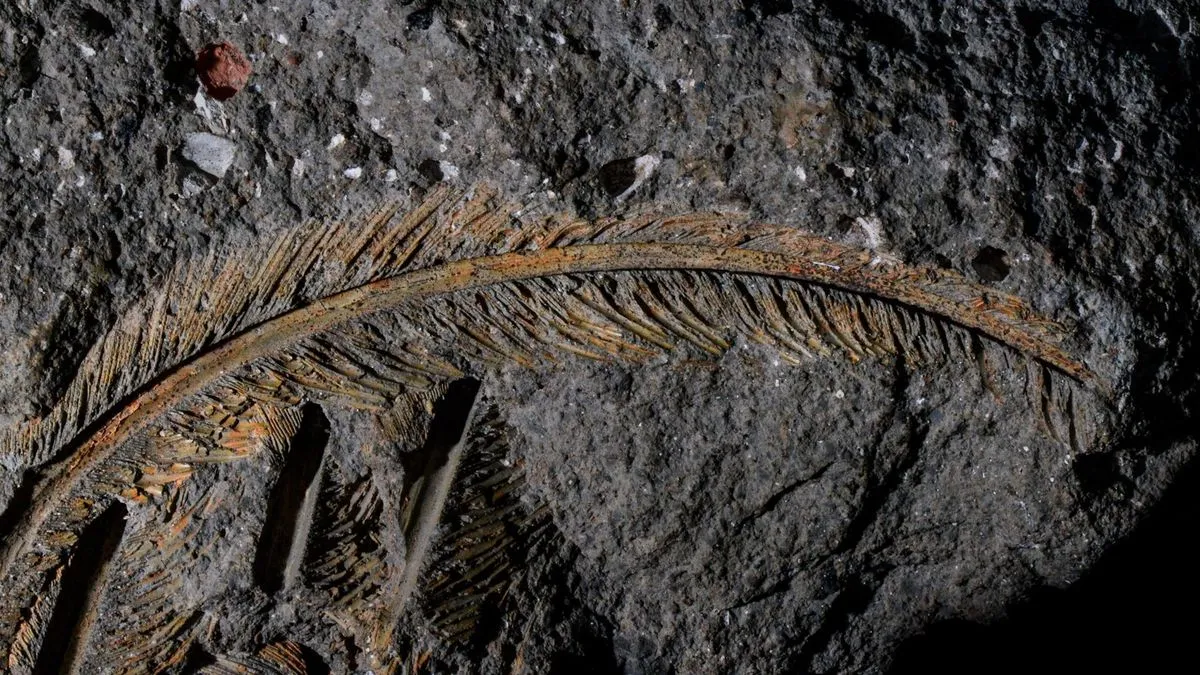
In a groundbreaking study, scientists have finally solved the enigmatic question of how the fossilized feathers of a 30,000-year-old vulture were preserved with such remarkable detail. The fossilized remains belong to the griffon vulture (Gyps fulvus), which was initially discovered in the Colli Albani volcanic complex located southeast of Rome, Italy, back in 1889. Remarkably, the fossil was found in excellent condition, preserving intricate traces of its delicate wing feathers and even its eyelids.
Since its initial discovery, researchers have been intrigued by the exceptional preservation of the griffon vulture. Recent research published on March 18 in the journal Geology provides fresh insights into this rare phenomenon. The study suggests that the extraordinary preservation of the vulture's soft tissues may be attributed to tiny silicon-rich crystals known as zeolites, which formed as the bird's remains were buried in volcanic ash from an eruption.
This finding marks a significant milestone as it represents the first instance of fossilized soft tissues, such as feathers, being found preserved in volcanic ash, according to the scientists involved in the study. Typically, fossil feathers are preserved in ancient mudrocks, often formed in lakes or lagoons, making this discovery all the more intriguing. Valentina Rossi, the lead author of the study and a paleobiologist at the University College Cork in Ireland, emphasized the unique nature of these findings, stating, "These feathers are nothing like what we usually see in other fossils."
The fossil was first unearthed in the foothills of Italy's Mount Tuscolo in 1889 by a local landowner. At that time, paleontologists noted the rare preservation of feathers within the volcanic rock. However, over the years, much of the fossil was unfortunately lost, leaving behind only the feathers of one wing and the bird's head and neck. Recent analyses have revealed previously unnoticed intricate details of the vulture’s eyelids and skin.
In the new study, researchers utilized electron microscopes and various chemical tests to delve deeper into the fossilized feathers. Their analysis uncovered that the feathers were preserved in three dimensions, a rarity for such fossils. Typically, feathers only leave behind two-dimensional carbon imprints in rocks, while three-dimensional feathers have previously only been discovered in amber, making this find exceptional.
The researchers reported being able to identify structural details of the feathers as minuscule as one micron (0.001 millimeters). Moreover, they determined that the feather fossils were predominantly composed of zeolite, a mineral commonly found in volcanic environments. Rossi explained that zeolites are minerals rich in silicon and aluminum, often formed as primary minerals or through the alteration of volcanic glass and ash.
This discovery is unprecedented, marking the first time feather fossils have been found preserved in such detail and specifically in zeolite. The presence of these feathers in zeolite indicates that the ancient griffon vulture was likely entombed in a substantial cloud of volcanic ash, which was significantly cooler than the pyroclastic flows that devastated Pompeii during the eruption of Mount Vesuvius.
Rossi noted that the exceptional preservation of the feather structures suggests that the vulture's carcass was buried in a low-temperature pyroclastic deposit. The volcanic ash likely crystallized into zeolite after interacting with water over several days, gradually replacing every cellular detail of the bird's remains.
As study co-author Dawid Iurino, an associate professor of vertebrate paleontology at the University of Milan, pointed out, typical volcanic deposits are associated with destructive, fast-moving pyroclastic currents that obliterate soft tissues. However, the geological settings can be intricate, encompassing low-temperature deposits that can preserve soft tissues at the cellular level.
The researchers are optimistic that this unique discovery could lead to the unearthing of other fossils concealed within volcanic rocks. Maria McNamara, a professor of paleontology at University College Cork, stated, "The fossil record continually surprises us, from new species to unusual body shapes, and now, new styles of fossil preservation." This discovery significantly broadens the potential range of rock types where fossils, especially fragile soft tissues, can be found.